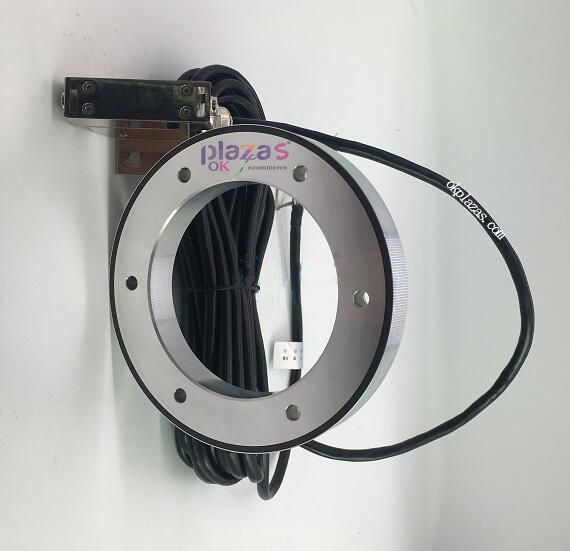What are the structural characteristics of shaft encoders and bearingless encoders
What are the structural characteristics of shaft encoders and bearingless encoders
What are the structural characteristics of shaft encoders and bearingless encoders
What are the structural characteristics of shaft encoders and bearingless encoders?
When engineers design encoders, they generally consider shaft encoders. In most shaft encoders, optical sensors and gratings are connected to the shaft. When the shaft rotates, the grating interrupts the optical path of the sensor and generates electrical pulses. This process is very simple, especially when measuring the appropriate accuracy under benign conditions. In harsh or outdoor environments, when the angle measurement accuracy is less than 1°, these encoders may not be the best choice. The optical sensor is unstable and not suitable for use under extreme temperatures. Foreign objects and shocks can also cause problems.

Encoder simultaneous interpretation is based on different sensing technologies, including capacitive, magnetic or inductive technologies. In harsh environments, optical sensors are not as reliable as capacitive sensors. Magnetic sensors can work normally in harsh environments, but their measurement performance is limited and easily affected by DC electric fields. As a relatively new form, inductive encoders are increasingly being used as alternatives to traditional inductive devices, such as decoders or rotary variable differential transformers (rvdt). Decoders and rvdt have been widely used in heavy industry, aerospace, defense and medical fields. Inductive coding uses the same basic physical principles as decoders and provides a similar level of reliability and performance.
Compared with optical encoders, induction shaft encoders have the advantages of compact structure, compact structure, and short axial length. On the outside, the shaft rotates in bearings. Bearings are usually small and not suitable for heavy loads. The shaft connected to the encoder must be aligned along its axis to avoid conflict with the bearing of the encoder itself. It cannot be used for a long time when the encoder bearing is not aligned.
If the applied installation tolerance is loose, the flexible coupling can minimize the effect of deviation. If the angle measurement accuracy is high, it is not recommended to use an elastic coupling. The angular displacement of the main shaft does not necessarily result in the same angular displacement of the encoder shaft, which may result in "idling" (lag) and inaccuracy.
Using a bearingless encoder also helps avoid alignment problems. This depends on the orientation of the host system, not the encoder. Bearingless encoders are usually divided into two parts: stator and rotor. Generally speaking, the stator has electrical connections (for power supply and data output), so the stator is usually fixed on the main frame of the host system, and the rotor is fixed on the rotating element.

Optics is the most commonly used sensing technology. If the operating environment is dirty and unstable, there may be a problem with a bearingless photoelectric encoder (usually called a ring encoder). Generally, an optical ring encoder has a fixed read head and a rotating disk. If the measurement accuracy is less than 1°, the installation tolerance of the optical disc relative to the reading head should be carefully considered. For high-precision circular encoders, measurement performance tolerances are indicated by the small font of the data sheet. For some optical ring encoders, it is not uncommon for the installation eccentricity to be less than 0.025mm.
The inductive ring encoder can also work reliably in extreme temperatures and dirty areas. Since they use the plane of the stator and rotor instead of the point measurement of an optical reader, they are more tolerant of deviations. This also makes the inductive ring encoder more and more popular with users. Size and shape are usually the biggest reasons for using a bearingless encoder. The shaft angle encoder has a compact structure and can be designed with a shaft (or hollow shaft), but the application of through holes with a diameter greater than 50mm is less. Bearingless encoders are very suitable for low axial height or large diameter. Large holes allow cables, pipes or mechanical components to pass under the encoder





